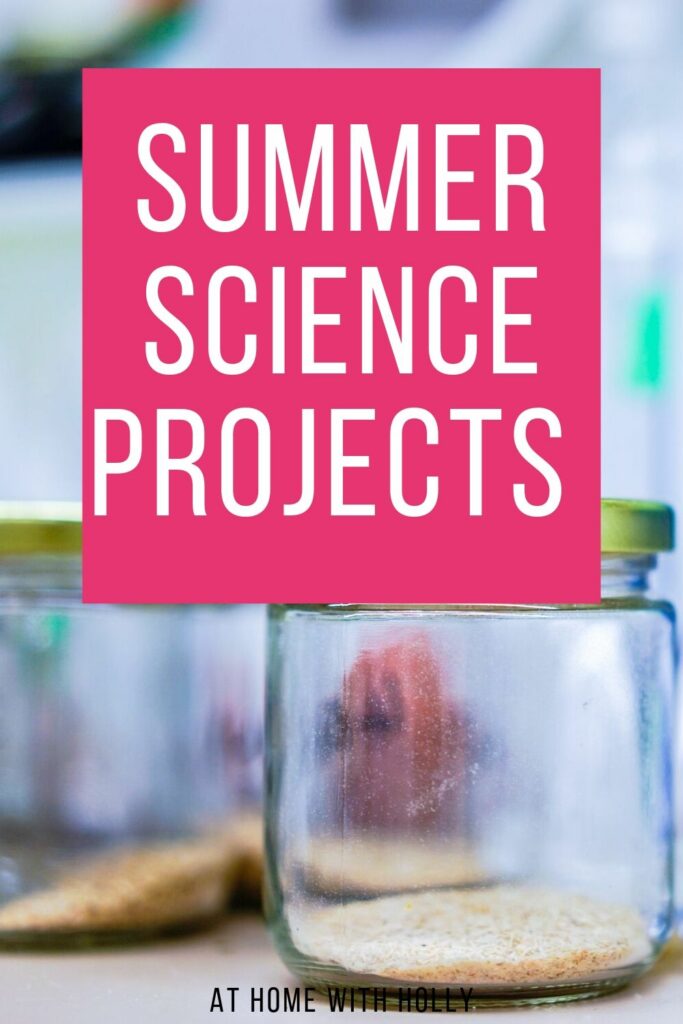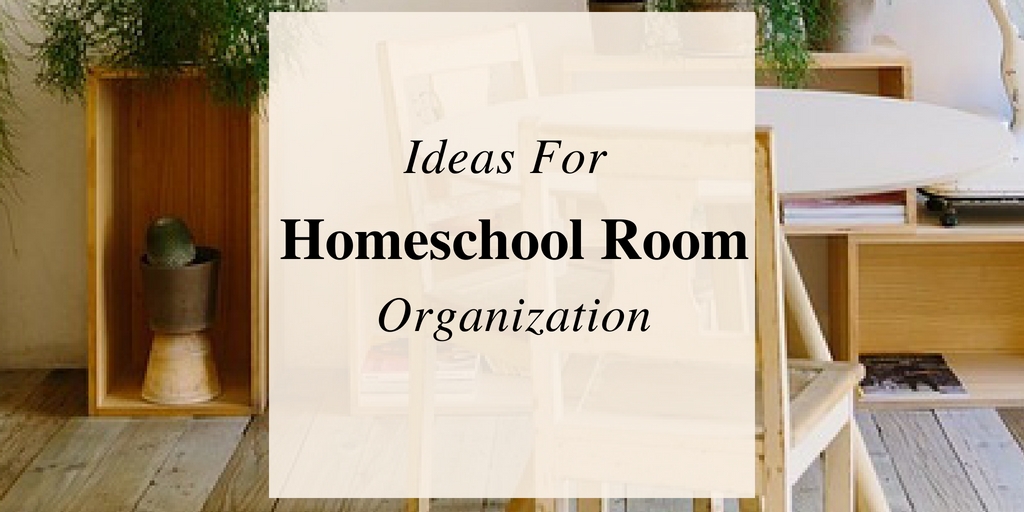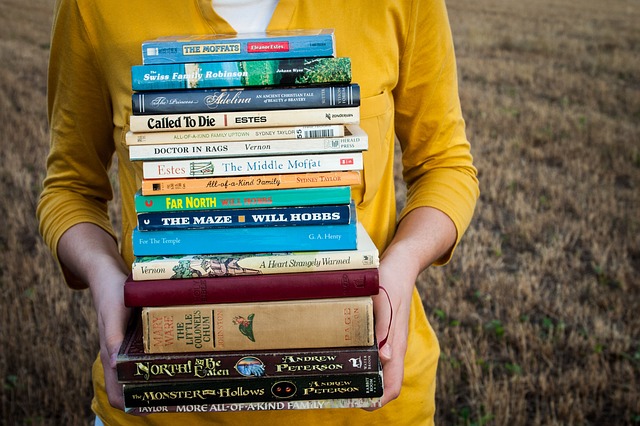Spruce up Your Summer with Science
Summertime has truly begun at my household, and as it keeps getting hotter outside, my kids have
been begging for fun indoor activities, aside from the online curriculum. I love to use all the free time
throughout the summer to do science experiments with my kids to show them that learning science can
be fun. I’ve listed out some of the experiments that my kids and I have done below; feel free to put your
own fun spin on them!

Elementary School
1. Slime
For your kids that are in elementary school, I always recommend slime. My house is covered in slime –
slime in the kitchen, living room, bedroom, even in my car! But not to worry, it’s easy to clean up, and on
top of that, it’s made with common cleaning ingredients, so it won’t hurt the house. For the most basic
slime, you’ll need the following:
1-ounce school glue (about a quarter of a standard glue bottle)
¼ cup of water
¼ cup of Borax
1 bowl
All you and your child have to do is first mix the glue and water together in a medium bowl, using either
your hands or a popsicle stick ( I recommend the popsicle stick). Then, add the Borax and mix well (this
will be a thicker consistency.). There you have it – the most simple slime recipe out there. Feel free to
add fun things, like different scents, food coloring, or even glitter!
The science behind the slime is that glue is made from an ingredient called polyvinyl acetate, which is a
liquid polymer. When the Borax, which is made from sodium tetraborate, is added, it combines with the
polyvinyl acetate and creates one super long, stretchy polymer – a chain of matter – that is stretchy and
thick.
2. Invisible Ink
My kids love to pretend that they’re spies or secret agents, and make up random codes to communicate
with each other. What better way to do so than to create some invisible ink? The ingredients are so
simple, you’re bound to have them lying around your house! Here’s what you’ll need:
Half a lemon
Water
Spoon
Bowl
Cotton swab
White paper
Lamp
To create the experiment, simply squeeze the lemon into the bowl and add a few drops of water. Mix
the two together well, then dip the cotton swab into the lemon-water mixture. Using the dipped cotton
swab, have your child write his or her secret message onto the white paper. Allow the paper to dry, then
place it directly under the lamp.
Soon after, the message that your child wrote should appear in brown!
This reaction happens because lemon becomes oxidized when it reacts to light, which creates the
brown color that is seen after the paper is under light. This is a reaction that happens to other acidic
substances, so you and your kids can try it with other fruits like limes or oranges, or using vinegar. You
can also try other substances that may not work, and see what happens!
Middle school
While slime and invisible ink can be fun for middle schoolers too, my kids like to do something a little
more challenging. These activities are a great way to make learning fun – they won’t even realize they’re
using their science knowledge.
1. Slushie Science
Whenever I’m at the mall with my kids, they always beg me for a slushie It’s the perfect way to cool off
in the hot summer sun! Turns out, you can make slushies at home, and use a little science while you’re
at it. Here’s how to do it:
Ingredients:
1/2 cup water
1 teaspoon salt
8 ounces of juice of choice
Jar with lid
Ziplock bag
This is an overnight project, so make sure to start the night before you plan on making your slushies!
You’re first going to combine the salt and the water in a ziplock bag, and make sure to get all the air out
before sealing it. Once it’s sealed, put it in the freezer overnight, folded so it can fit into the jar you’ll be
using the next day.
The next day, place your saltwater ice creation in the jar, while it’s still in the bag. Then, simply pour the
juice into that jar, shut the lid, and shake the jar real well. It might take a minute, but a slushie should
soon begin to form! Once it’s the consistency you desire, pour it into a glass and enjoy!
My kids love this experiment because of how flexible it is – you can use any liquid that has sugar in it!
Not to mention, it’s delicious. But while your child is enjoying the treat you just made, explain the
science to them:
Salt lowers the freezing point of water, which is why it’s so much harder for saltwater to freeze than
freshwater. Once the saltwater does freeze, it stays colder than normal ice would, which causes the
liquid around the saltwater ice to freeze.
My kids love to test out the actual science outside of the slushy experiment, and they’ll put a
thermometer in saltwater to see what the freezing point is, in comparison to regular ice. Another spin on
this experiment is timing the two kinds of ice to see which one freezes first! And while this isn’t science-related, my kids love to put food coloring in the saltwater to make it look more interesting. There are
plenty of ways to modify this experiment!
2. Homemade bottle rocket
While my kids have lots of fun with simple experiments, others may want a more…explosive
experience. For parents that are worried about high-cost, messy, or unsafe experiments, there’s a
middle ground to appease your children. Homemade bottle rockets are inexpensive, simple, but still
plenty of fun for middle schoolers. This may remind parents of homemade volcano experiments, but not
to worry – clean-up is a whole lot easier.
You’ll need the following:
Empty plastic water bottle
Tape (we recommend duct tape)
Pencils or popsicle sticks
Distilled vinegar
Baking soda
Cork
Paper towel
To assemble, first tape the popsicle sticks or pencil to the water bottle so it can stand upside down
without falling over. Then, fill the water bottle partway with vinegar – I usually fill it about a quarter of the
way up to start. Add about two tablespoons of baking soda into a small piece of paper towel – it needs
to be small enough to fit in the water bottle. Make sure you roll the paper towel well so the baking soda
doesn’t immediately fall out.
Now is the best time to step outside if you haven’t done so yet. With the bottle in its upright position, put
the paper towel with baking soda inside the bottle. Quickly place the cork into the bottle, so when the
bottle is turned upside down, the water doesn’t leak out. Shake the bottle and place it upside down so
the pencils are supporting it, and watch it fly!
Here’s the science behind it. Vinegar is an acid – specifically, it is called acetic acid. Acids react strongly
with bases, and baking soda is a great example of a base. Its chemical name is bicarbonate. When
bicarbonate and acetic acid are mixed together, several products are made – the most reactive one
being carbon dioxide. This is the same carbon dioxide seen when a can of soda is shaken well!
There are plenty of ways to accessorize or modify this experiment. Try adding different amounts of
baking soda or vinegar and see how well the bottle rocket flies. You can also add food coloring to the
vinegar, though this may make more of a mess in the yard. I make sure to buy washable food colorings
– yes, they’re real! – so I don’t have to worry about that. If your child is more curious, feel free to add baking soda to vinegar in just a bowl to see how the two react. And if you enjoy the bottle rocket
experiment so much, you can continue to use the same water bottle over and over!
High school
High school science experiments can get a little more complicated, but that doesn’t mean they’re not
fun! My oldest is just starting her freshman year of high school so we did some fun experiments that
started with the most basic skills needed to be successful in her science classes. These experiments
can be used for all high school students, just to brush up over the summer and have fun!
1. Blow up a balloon with yeast
This experiment is a little similar to the baking soda and vinegar reaction, but there are so many
variables to this experiment that can be changed. Plus, most of the ‘ingredients’ are common household
items, and there is little to no mess created, making this a perfect summer science experiment.
You’ll need:
1 packet of yeast
1 16oz or smaller soda bottle
1 tablespoon of sugar
Warm water
Balloon
First, fill the bottle up about 1 inch with the warm water, and empty the yeast packet into the bottle. Swirl
the water and yeast together and watch it start to dissolve. Then, add the sugar into the bottle, swirling
the bottle more. Stretch your balloon so the opening goes over the opening of the bottle, and then place
the bottle-balloon configuration in front of a window, or in a warm place. Check back in about 20
minutes – the balloon should have begun to inflate!
The science is slightly similar to the baking soda and vinegar experiment, but with a twist: yeast is
actually a tiny, microscopic, living organism! Just like us humans, yeast needs sugar to get energy. And
just like how humans expel carbon dioxide, yeast reacts the same as it eats the sugar! The carbon
dioxide it releases helps to blow up the balloon.
For my daughter, I have her answer questions about the experiment to make sure she is really learning
the material. These questions may need to be answered by repeating the experiment, but this is all part
of the scientific method!
Questions to ask may include:
● Does the temperature of the water change how much carbon dioxide is released? What about
the temperature of the room?
● What happens when there is not enough sugar? When there is too much?
● What kind of sugars do yeast eat most of? Maple sugar? Cane sugar? Pure table sugar?
● Does the size of the container affect how much carbon dioxide is made?
2. Egg pressure
High schoolers often have to take physics, which can be one of the most intimidating subjects to
students. This experiment can show how fun the subject can be! This experiment does require matches
or a lighter, so you may want to supervise your child during it.
You’ll need:
A glass bottle, just small enough so the egg doesn’t fall in on its own
Hard-boiled egg, peeled
Small piece of newspaper (roughly 3” x 3”)
Lighter or match
First, start by peeling the shell off your hard-boiled egg if you haven’t done so already. Place the egg on
top of the bottle to make sure that it can stay balanced there, but not fall into the bottle on its own. The
rest of the experiment is simple. Fold the newspaper into a strip small enough to fit inside the bottle, and
use the lighter or match to light it. Once the newspaper is lit, immediately put it inside the bottle, and put
the egg on top of the bottle. If all goes well, the egg should be sucked into the bottle!
To explain the science, a normal bottle has the same air pressure as the air around it. However, fire and
flames have physical properties that causes the air around it to expand. The air continues to expand
until the flame goes out, and then the air contracts almost immediately. When air contracts, it usually
takes in the air from outside the container. However, because the egg is blocking the outside air from
the container, there is a vacuum seal. As the outside air keeps trying to push to be inside the bottle to
equalize the air pressure, the egg slips in!
Some questions I ask my daughter when she does this experiment are:
● What would happen if you tried a regular egg?
● What other objects could you use instead of an egg?
● Is the egg being pulled in, or pushed in?
● How can you get the egg out of the bottle in one piece?
Those are just some of my favorite science experiments to do with my kids. Feel free to be creative and
change up experiments to demonstrate scientific progress. Have fun, and be safe!



